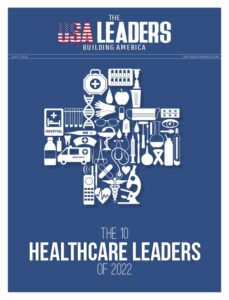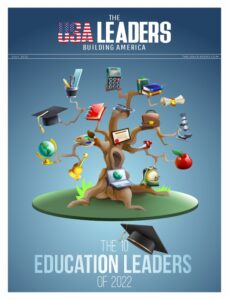The future of AI industry holds immense promise and potential, poised to revolutionize various sectors and redefine the way we live and work. With an expected revenue of a staggering US$390.9 billion in 2023, the industry is on an upward trajectory, witnessing rapid growth and innovation. As artificial intelligence continues to mature and advance, its impact is becoming increasingly tangible, with businesses and individuals harnessing its capabilities to drive efficiency, enhance decision-making, and unlock new opportunities. From autonomous vehicles to personalized healthcare, AI is reshaping our world, creating exciting prospects, and transforming industries across the globe. In this blog, we will see the impact and the future of AI industry and how we need to be ready for that.
Current impact/growth
AI’s impact on the future of work and life is transformative. Advancements in machine learning, natural language processing, and robotics are revolutionizing industries and reshaping our daily routines. AI automates tasks, boosts productivity, and reduces costs in the workplace. Many companies now emphasize using bots and instructing them to collect, extract, and organize the data. It creates new opportunities for humans to focus on complex, creative endeavors.
Beyond work, AI improves convenience through personalized virtual assistants and enhances healthcare through better diagnostics and treatment. Addressing ethical concerns such as data privacy and algorithmic bias is essential. Embracing AI’s potential is crucial for a prosperous future.
Industries that will get affected severely in the future
1. Automotive Industry

- CAGR: 55%
- Current market size: US$ 9.3 billion (2023)
- Expected market size: US$ 744.39 billion (2033)
The future of AI industry in the automotive sector is promising. Self-driving cars are a testament to AI’s current impact, utilizing advanced algorithms and sensors for real-time decision-making. AI-powered voice assistants and infotainment systems enhance the driving experience further. AI still has untapped potential to explore. Ongoing research and development will enable AI to revolutionize vehicle safety, predictive maintenance, and intelligent traffic management systems. The automotive industry can look forward to an exciting future where AI continues to transform and shape the way we drive.
2. Manufacturing and Labor-Intensive Industries

- CAGR: 47.9%
- Current market size: US$ 97 billion (2023)
- Expected market size: US$ 163.6 billion (2026)
Manufacturing and labor-intensive industries are vital to economies, employing a large workforce. These sectors involve physical production processes and significant human labor. However, with the rise of AI, these industries are undergoing transformation. AI is increasingly integrated into manufacturing, enhancing efficiency, lowering costs, and improving productivity. Automation, machine learning, and robotics revolutionize production lines, enabling higher precision, faster cycles, and reduced errors. Although AI is still in its early stages, its potential to reshape manufacturing and labor-intensive industries is enormous. It promises a future of increased automation and improved overall performance.
3. Traditional Media and Broadcasting

- CAGR: 30%
- Current market size: US$ 8.4 billion (2023)
- Expected market size: US$ 104.36 billion (2030)
Traditional media and broadcasting encompass established forms of mass communication like TV, radio, newspapers, and magazines. These platforms have long been vital for sharing news, information, and entertainment. Although digital media has gained prominence, traditional media remain influential. However, AI technology is increasingly playing a role in transforming the industry. AI is used for content personalization, data analysis, and targeted advertising, enhancing the efficiency and effectiveness of traditional media channels. As a result, traditional media and broadcasting are adapting to leverage AI’s capabilities while maintaining their enduring significance.
4. Healthcare

- CAGR: 47.6%
- Current market size: US$ 14.6 billion (2023)
- Expected market size: US$ 102.7 Billion (2028)
Healthcare is critical for safeguarding well-being, avoiding disease, and improving quality of life. Artificial intelligence (AI) has transformed the industry, enabling more accurate diagnoses, effective treatments, and better patient care. Machine learning and AI-powered data analytics are utilized in medical imaging, drug development, electronic health records, and personalized medicine. AI is revolutionizing the area and holding out hope for better healthcare results because of its ability to evaluate large amounts of medical data and assist healthcare personnel.
5. Retail Industry

- CAGR: 30.3%
- Current market size: US$ 6 Billion (2023)
- Expected market size: US$ 85 Billion (2033)
The retail industry is a vital and dynamic sector, valued at trillions of dollars globally. It encompasses the sale of goods and services through various channels. In recent years, the industry has witnessed significant integration of artificial intelligence. AI is transforming retail operations, improving inventory management, personalizing marketing campaigns, optimizing customer service with chatbots, and enhancing demand forecasting accuracy. The adoption of AI in the retail industry continues to grow, revolutionizing operations, elevating customer experiences, and enabling data-driven decision-making. This technological advancement is driving innovation and shaping the future of the retail landscape.
6. Finance, Banking

- CAGR: 32.36%
- Current market size: $11.59 billion (2023)
- Expected market size: US$ 64.03 billion (2030)
Finance and banking play a pivotal role in the global economy, providing individuals, businesses, and governments with essential financial services. The finance sector encompasses activities such as investing, borrowing, lending, and managing money, while banking involves storing and distributing funds. Technology, including AI, has significantly transformed the industry. Finance and banking extensively utilize AI to detect fraud, assess risk, execute algorithmic trading, and automate customer service. It has expedited processes, improved accuracy, and enhanced customer experiences, making it an indispensable tool for financial institutions worldwide.
How do we need to be ready?
Even though humans develop AI, AI will bring a massive change in the life of humans. There is growing evidence that AI will eventually replace humans in many work environments, which could make it much more difficult for people to succeed in their chosen careers. But AI is always going to be under process and progress. Humans will still have the upper hand only if they can handle and improve the quality of the AI.
Let’s look at some of the practices we can practice to stay ahead and in control of the AI industry’s future.
- Continued Research and Development
Investing in AI research and development is critical for understanding its capabilities, limitations, and possible risks. Governments, academic institutions, and corporate groups should invest in AI technology advancement and new ideas.
- Ethical AI Development
Emphasizing the creation of ethical AI systems is vital. It’s important to promote transparency, accountability, impartiality, and confidentiality to ensure fairness and safety in AI algorithms and decision-making processes. By establishing standards and regulatory frameworks, we can ensure that AI is used appropriately.
- Human-Centered Design
Designing AI systems with human-centered principles in mind can enhance human abilities instead of replacing them. We can design AI systems collaborating with humans in multiple fields by emphasizing human well-being, values, and choices.
- Lifelong Learning and Upskilling
In a world where AI is quickly advancing, encouraging ongoing development and upskilling is critical. We may optimize the possible advantages of AI while avoiding the risk of job loss by providing humans with the skills and knowledge required to work alongside AI systems.
- Maintaining Human Creativity and Emotional Intelligence
Developing and rewarding uniquely human characteristics like creativity, emotional intelligence, analytical skills, and sensitivity can assist humans in maintaining an advantage against AI. These characteristics are complex for robots to copy and are necessary for many industries, including art, invention, and nurturing.
In conclusion, the future of the AI industry holds immense promise and potential. As technology advances at an unprecedented pace, AI is poised to revolutionize countless sectors and shape how we live and work. However, it is crucial to stay ahead of it and only give part of the power to the hands of the AI. We hope this blog has provided you with valuable insight and a warning about the future of AI industry. It’s crucial to prepare for significant changes expected in the coming years.
ALSO READ: How Industry 4.0 will revolutionize Manufacturing?





















